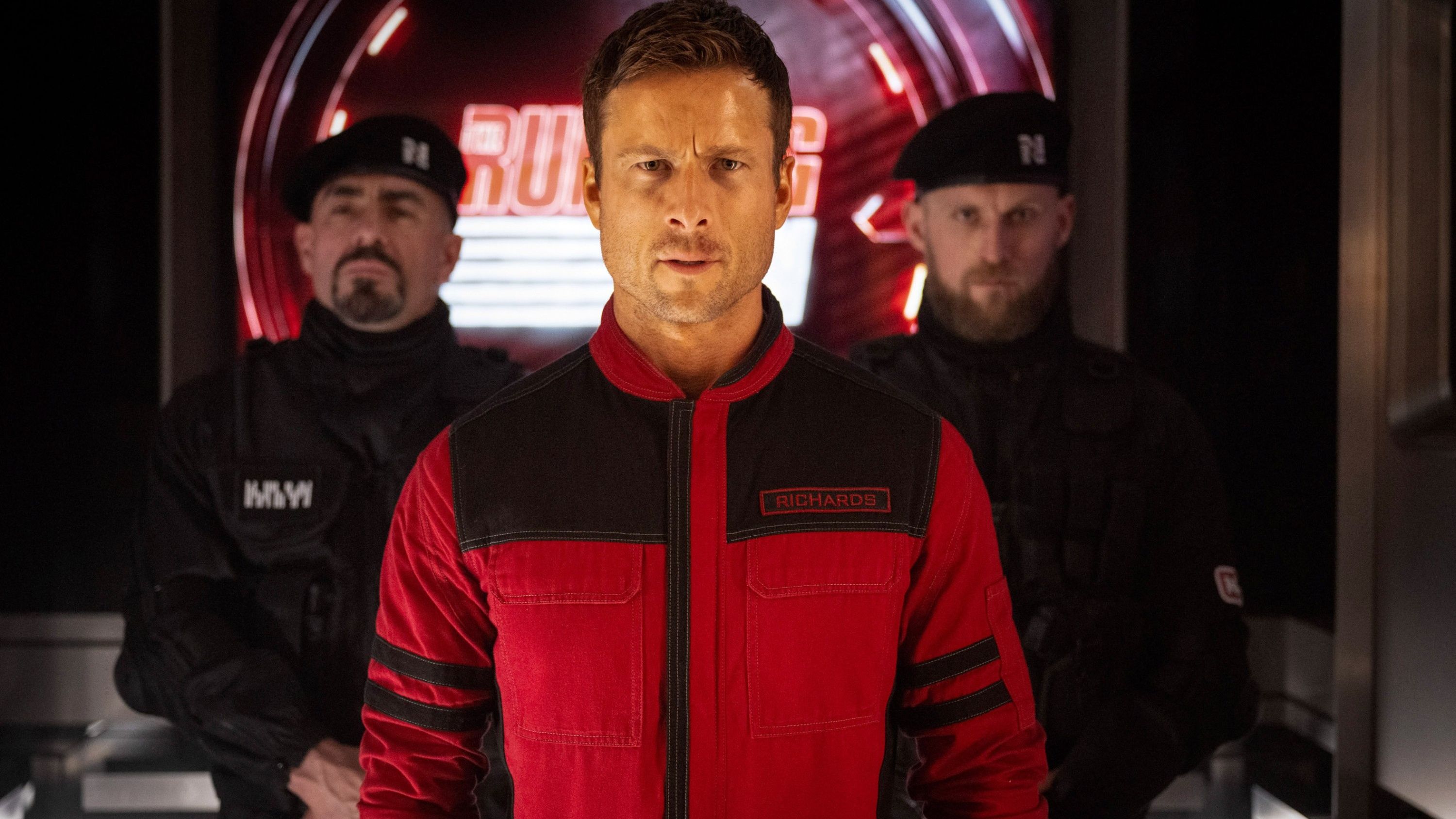
Edgar Wright is considered one of the most talented directors working today, even when compared to acclaimed filmmakers like Christopher Nolan. He started his career with the quirky western parody A Fistful of Fingers, then worked on several BBC television shows. He later gained recognition with the critically successful film Shaun of the Dead.
With The Running Man, director Edgar Wright takes a noticeable shift in style, moving away from his usual British-influenced films to tell a distinctly American story of anger and celebrity in a bleak future. Though it might not be his strongest film overall, it still showcases Wright’s signature energetic filmmaking.
Edgar Wright Makes The Running Man His Own

What makes The Running Man truly stand out is Edgar Wright’s skill as a director. He successfully blends his talent for creating immersive worlds and exciting action sequences with the thought-provoking social commentary and realistic characters found in the original Stephen King story.
Although the film’s different moods sometimes contrast sharply, it remains visually engaging throughout. The beginning is especially well-done, with smart editing and emotionally powerful moments that keep the story centered on Ben Richards while still building a believable and bleak dystopian world. The environments are harsh, but never feel empty or artificial – a common pitfall for this type of film.
What makes Edgar Wright’s direction so effective is its realistic, raw style, especially when placed against the backdrop of wealth and privilege. This contrast fuels both the dramatic and comedic moments throughout the film. The story feels real because it constantly reminds us of the characters’ flaws and prevents them from becoming simple caricatures.
This idea strongly connects to the film’s exploration of how the media portrays real people. Through editing, technology like deepfakes, and manipulative filmmaking, the stars of “The Running Man” are reduced to caricatures. Ultimately, it emphasizes just how dehumanizing the world can be for individuals like Jenni Laughlin and Tim Jansky.
The film’s fast pace and dark humor are effective because of director Edgar Wright’s distinctive style. He’s known for skillfully combining precise editing and strong visual timing to create successful comedies, horror films, dramas, and action sequences. Scenes like the auditions and the chase scene are energetic, funny, and suspenseful all at the same time.
While the second half of The Running Man isn’t as fast-paced or polished as the first, director Paul Michael Glaser still manages to showcase his distinctive flair. A standout moment is the thrilling fight scene inside an airplane cockpit – it’s a wildly imaginative sequence where the battle feels incredibly chaotic as the plane is tossed around. It’s a truly exciting, enjoyable, and original scene.
Edgar Wright Is My Favorite Director, And Here’s Why
 Paramount Pictures /Courtesy Everett Collection
Paramount Pictures /Courtesy Everett Collection
I became a big fan of Edgar Wright’s work after seeing Shaun of the Dead when I was younger, and then discovering his earlier shows like Asylum and Spaced. He’s truly unique – he has a knack for making even ordinary places and situations thrilling with his dynamic and visually striking style.
With The Running Man, the director tackled their largest-scale project yet – a true blockbuster. While they’ve played with similar action elements in films like Hot Fuzz and Scott Pilgrim vs. the World, even earlier movies like Baby Driver boasted more creative and exciting car chases than anything in the Fast and the Furious franchise.
Last Night in SoHo blends different types of horror, creating a narrative full of surprising twists and disturbing imagery. This isn’t director Edgar Wright’s first time exploring science fiction – The World’s End previously demonstrated his skill at combining realistic human stories with the conventions of larger genres.
Wright consistently brings personality to scene transitions and adds emotional depth to even simple camera work. This is particularly noticeable in The Running Man, showcasing his skill as a director. Moments like Ben’s solitary night in Derry or his reaction to Killian’s last message are powerful examples, effectively conveying emotion without any dialogue.
Edgar Wright’s directing style is known for being energetic, quick, and full of feeling. He manages to do this while still keeping his signature wit and unexpected emotional shifts. While directors like Christopher Nolan, Paul Thomas Anderson, Chloé Zhao, and Yorgos Lanthimos also excel at bringing emotion to their films, Wright makes it look remarkably natural and easy.
The film The Running Man truly shines when it highlights the difference between genuine people and the polished, manufactured image presented by the wealthy elite, like Killian. This contrast is what gives the movie its impact. Director Paul Michael Glaser’s unique style also adds a lot to the film, blending seamlessly with the story adapted from Stephen King’s work.
Wright’s stylish direction, clever writing, and consistently engaging films make him a truly distinctive director in Hollywood right now. While I didn’t entirely love The Running Man, it’s clear Wright is a very talented filmmaker.
Read More
- Gold Rate Forecast
- How To Watch Under The Bridge And Stream Every Episode Of This Shocking True Crime Series Free From Anywhere
- Silver Rate Forecast
- BrokenLore: Ascend is a New Entry in the Horror Franchise, Announced for PC and PS5
- Britney Spears’ Ex Kevin Federline Argues Against Fans’ Claims About His Tell-All’s Effect On Her And Sons’ Relationship
- Taming Quantum Chaos: A Stochastic Approach to Many-Body Dynamics
- Get rid of the BBC? Careful what you wish for…
- Sony to Stimulate Japanese PS5 Sales with Cheaper, Region-Locked Model
- South Park Creators Confirm They Won’t Be Getting Rid of Trump Anytime Soon
- Valve’s new Steam Machine is just a PC at heart — here’s how to build your own and how much it will cost
2025-11-18 04:04